I taught knitting for several years.
And one phrase that used to make me cringe every time I heard it was, “do I really have to do a gauge swatch?” The reason it made me cringe is that NOTHING is more linked to the success of your final product than gauge. Nothing. Not fiber. Not color. Not price. And not even pattern. You could get free cashmere, pick the most beautiful pattern in the whole world, perfectly suited to your shape and in a beautiful color, and if your gauge is off, the project will look bad, and not fit.
Do a gauge swatch. Every time, do a swatch.
“But I am not good at math.” or “I don’t understand why/how to do one.”
Math is for everyone when it is related to a sweater. When people explain fractions using pieces of pie, everyone can relate. So when knitters talk about math to estimate if a new sweater will fit, then math is for everyone. Stop a minute. Sketch it out. And run the numbers. It will make sense if you see it.
The main issue with gauge is that a little problem gets multiplied into a BIG problem across the span of a project. Let’s talk about the measurements for one fictional sweater as an example. The sweater is supposed to be 38 inches around the bottom cast on, and you are supposed to get 4 stitches per inch, and you are supposed to cast on 152 stitches.
If you are knitting tighter, and you are getting 4.5 per inch, you will loose 4.25 inches! (Your sweater would now be 33.77 inches around.) On the other end of the spectrum, if you knit 3.5 st/inch instead, your sweater would be a gracious 43.42 inches around, and just HANG off you.
Either way, you have completely missed the mark you were going for.
Gauge is defined on the yarn label using a 4 inch square. (This is so that the metric world can talk to the imperial world without a conversion chart. 4 inches is almost exactly 10 cm.)
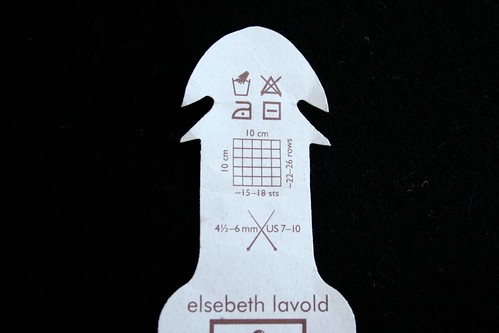
Here, the label on my yarn says that I ‘should’ get 15 – 18 stitches over 4 inches.
They suggest I use between a 7 – 10 needle.
That is a pretty big variance, so there needs to be some testing to figure out where my knitting falls in that range. Test your gauge by using several different needles in the range that they suggest.
To make sure that you are not optimistically stretching or squishing your square, cast on 2-4 stitches more than they suggest, so that the 4 inch square will not include edge stitches or the ‘curling under’ part.
Knit about 3-4 inches up (in stockinette stitch) and then switch to another needle and do another swatch. I like to leave the swatch(s) connected, and put in a row of purl (on the right side) as a line of demarcation where I change needles. Then I don’t have to guess later.
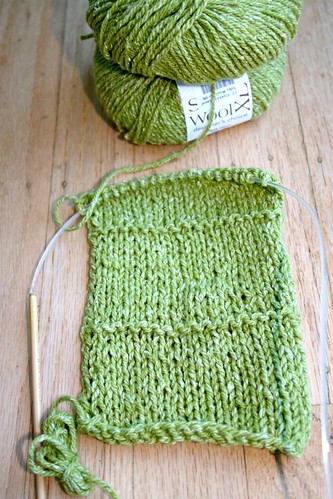
For my swatch I started on 8’s, then went to 7’s and finally to 6’s.
Stockinette stitch will curl naturally. So your swatch will be curled on the ends.
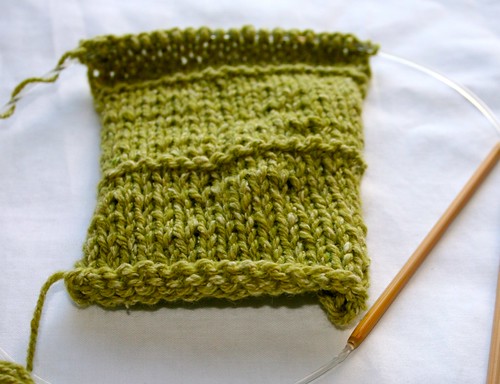
You will want to measure it uncurled.
If you are new to knitting, or you have trouble you could pin it down, as shown here.
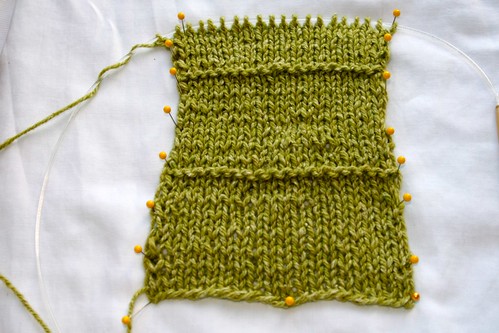
It is not pulled or stretched at all. Just uncurled, and pinned down.
To count the stitches, you can use the “knit check” and put the ‘window’ over your stitches.

Keep in mind that the window is 2 inches, so you will have to double your number.
If you are using a regular ruler, or you want the consistency of measuring across 4 inches, then you can employ this trick. Put in one bobby pin, measure 4 inches, and slip in another bobby pin. then count the stitches between the pins.
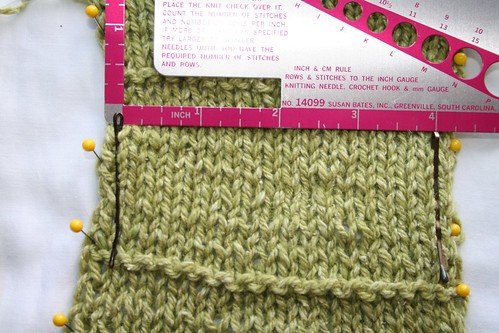
Once you have done your swatch, have a look at the stitches objectively, and decide if you like the ‘tension’ in the fabric itself. (this part is personal preference.) Can you see air through the stitches? Do you prefer to do a more “open” stitch? Or, is it tighter? And do you prefer to see the tighter stitches?
Once you decide which one you would like the best, then check your pattern, and see if you can make that work. Normally, if you have bought yarn for a specific project, there will be a size that will fit with the gauge you like.
(We will talk about how to change a pattern, and work outside the gauge they have specified in another post.)
I hope this information is helpful.
Please write if you have any specific questions that we could help answer.
© 2005 – 2011 Kathy Lewinski & Susan Cornish

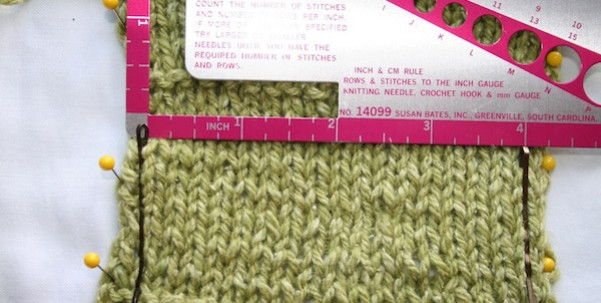


13 Comments to The Gauge Swatch Dissected